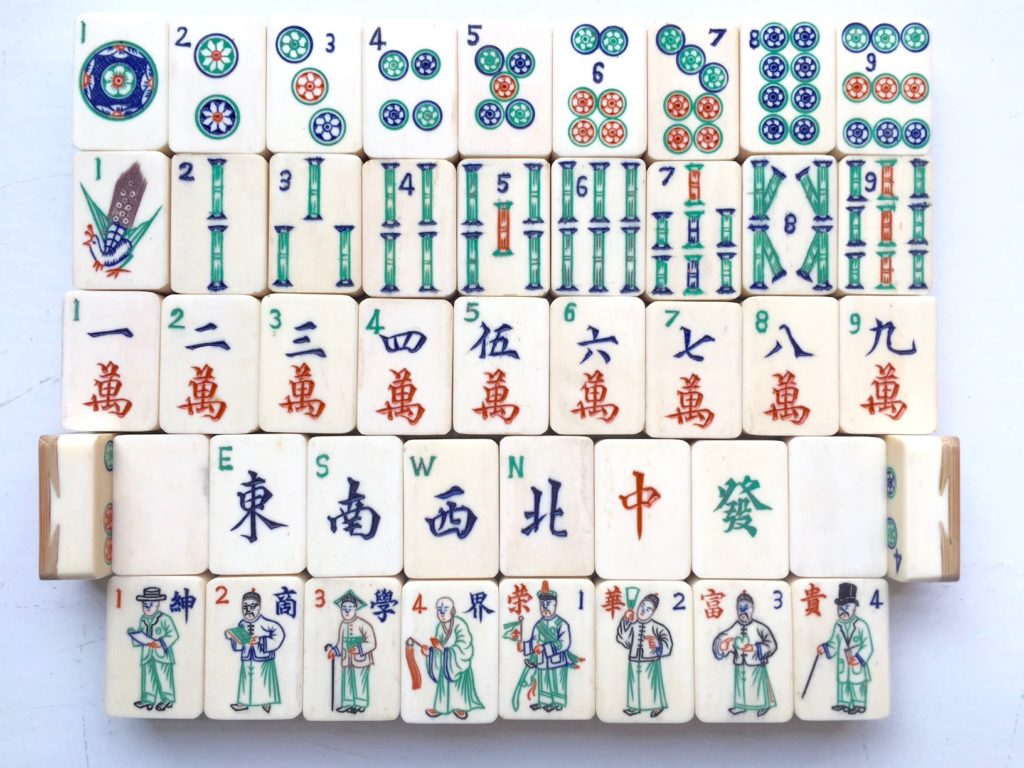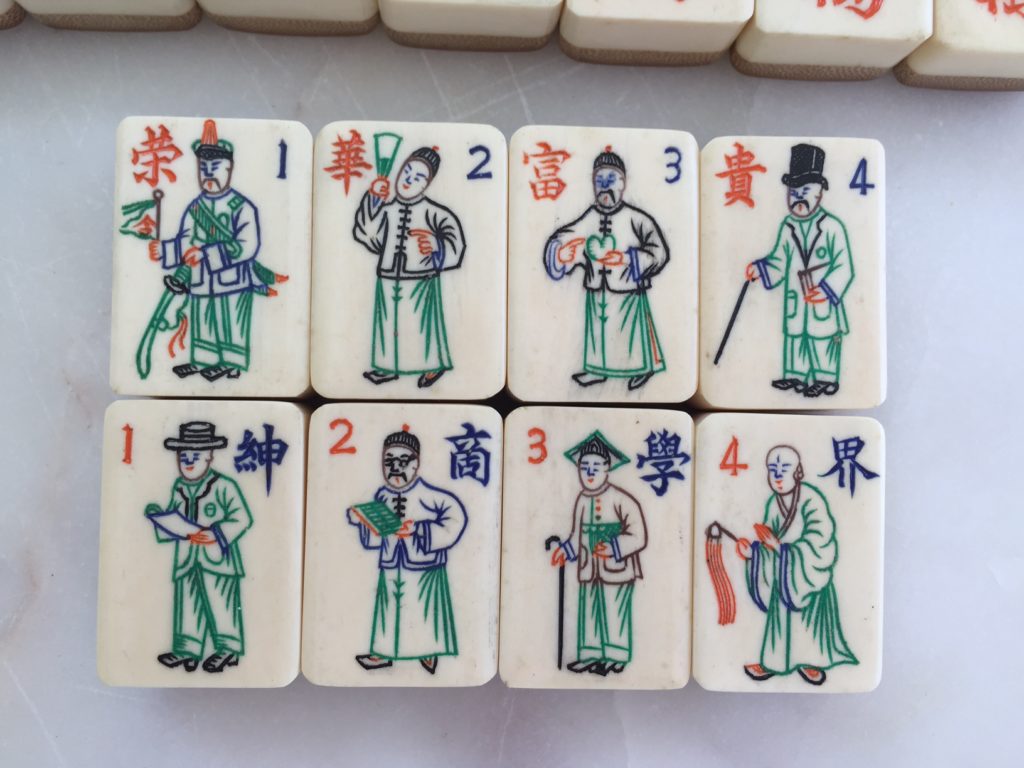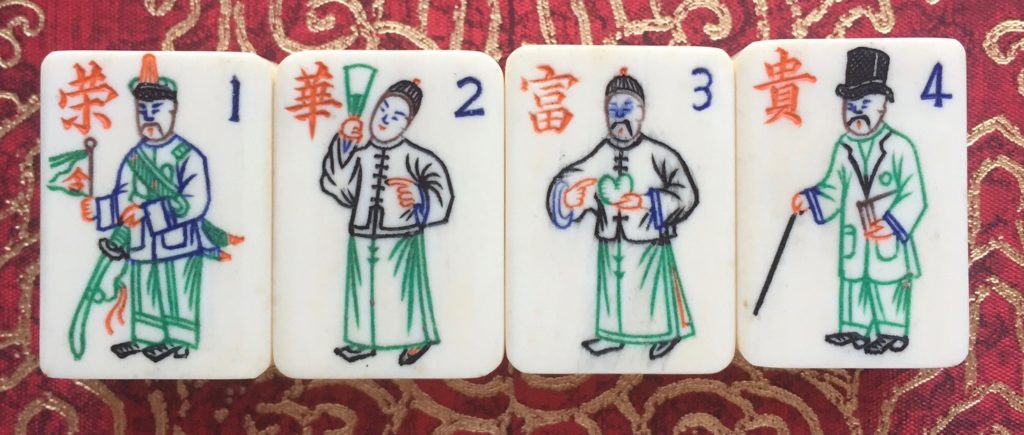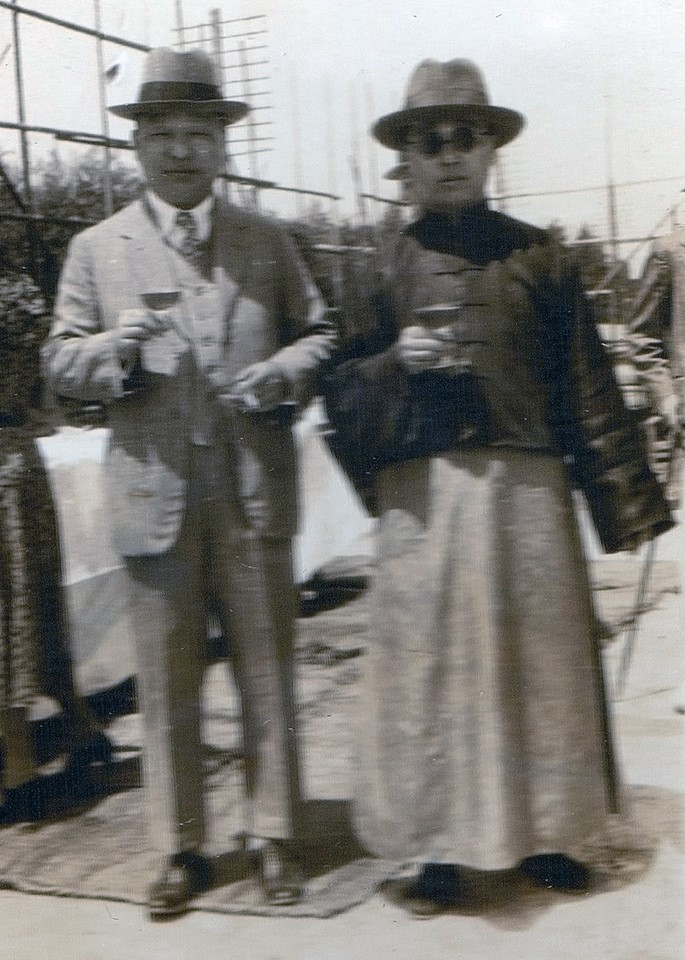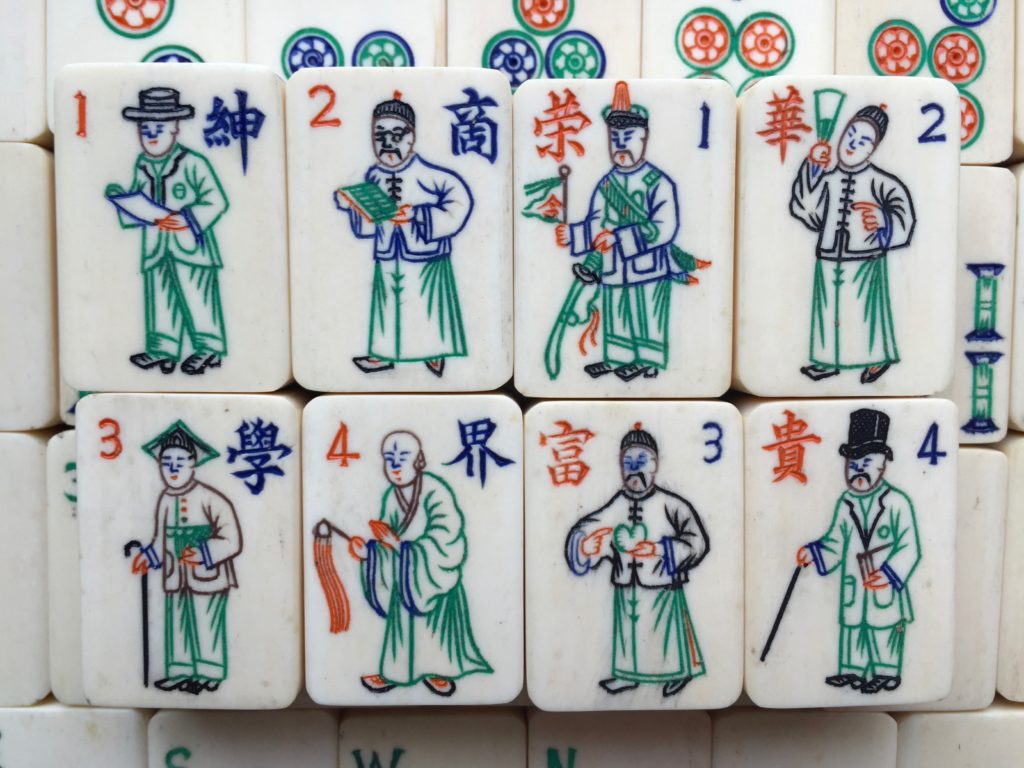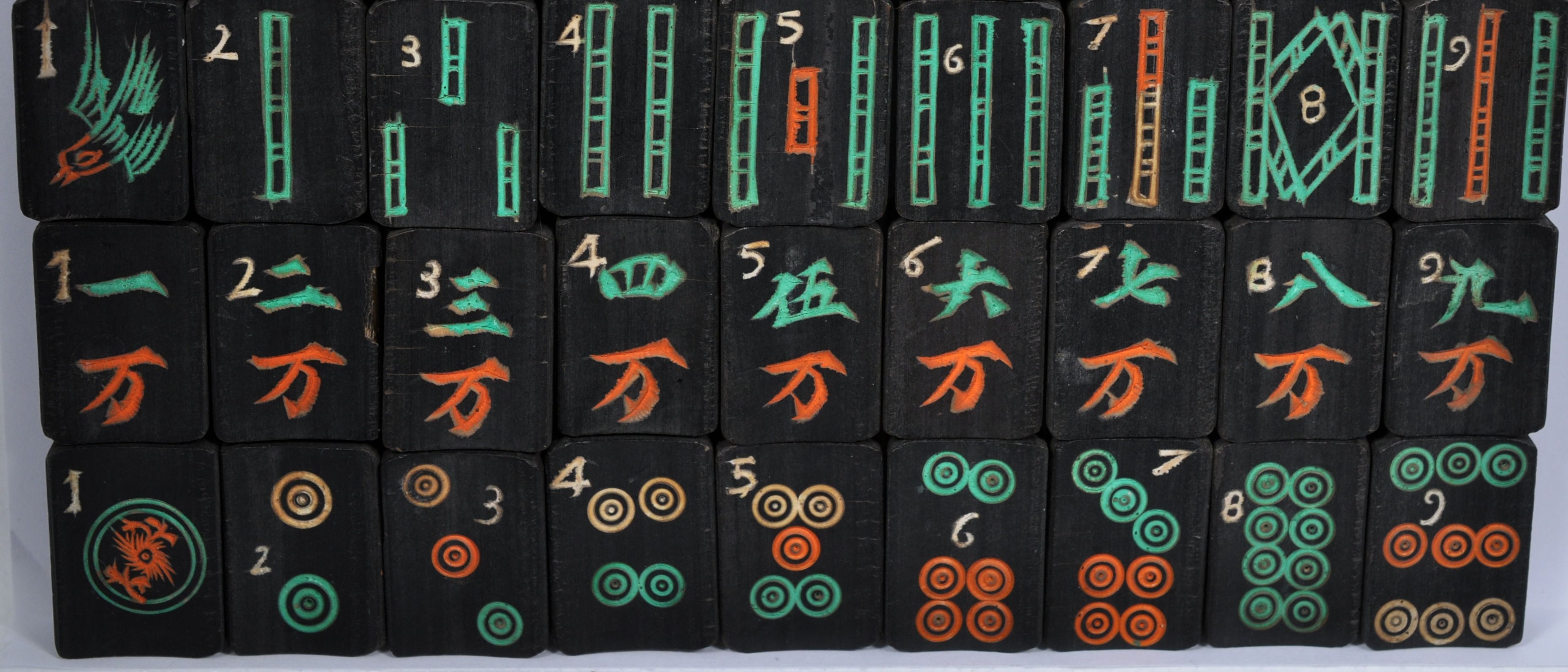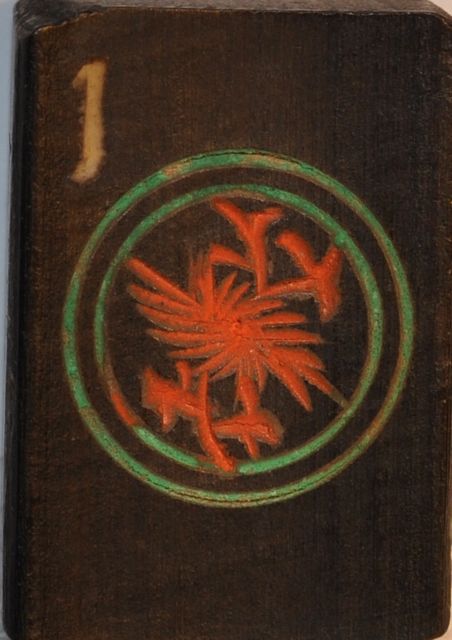The set is wonderful, with tiles of great thick bone (75% the thickness of the tile is bone. In the 1920s, the heyday of hand-carved sets coming from China, the best bone and bamboo sets had the thickest bone, and only the most skilled carvers were involved with carving those sets.) You can see how fabulous the One dot is, with its brilliant blue slightly squared off interior. The center is the plum blossom, that five petaled flower beloved by the Chinese. The other Dots are flowers, but not plum blossoms. The Bams have the One Bam peacock, frequently seen in Bone and Bamboo sets, and the other Bams have column-like shapes. (On some of these sets I often think the 8 Bams look a lot like legs, don't you?)
The Craks are not unusual, nor are the Winds or the Dragons.
Ah, but then the Flowers!!
When you look at all these different occupations seen on the tiles, you can see why Cari K. dubbed it "What's My Line?" after that great old tv show in the 1950s, a time when families used to gather around the black and white television set in the living room and watch game shows together.
But there is something more important going on with these images, and this is what we will look at now.
Ray Heaton has translated the Chinese characters on the tiles:
Top row are 榮華富貴, rónghuá-fùguì, glory, splendor, wealth and rank (a Chinese idiom meaning high position and great wealth).
Looking at the men depicted, it is easy to see that the man on the left is in the military, and the next man is holding a fan (not a glass of champagne as many of us first thought!) We are not quite sure about the next man who seems to be holding a heart, and pointing at it. The furthest right man seems to be a banker.
I haven't come across the bottom row before.
I think they are 紳商學界, shēn shāng xué jiè, meaning something like "the gentry, merchants and scholar society". I'll need to look this up as I'm sure it must refer to some specific classification of the educated classes.
The far left man looks to be in business, the next man could be a merchant holding an abacus, then comes a student and a man in a religious order.
But Ray does not just stop at translating, he puts things into context, because so much of what we see on Mahjong tiles needs to be understood based on greater knowledge. So here is what he came up with:
According to Wikipedia:
"It is considered to be a sacred and auspicious symbol in Hinduism, Buddhism, and Jainism and dates back to before the 2nd century BCE."
The Red Swastika Society (世界红卍字会simplified Chinese: 世界红卍字会; traditional Chinese: 世界紅卍字會; pinyin: shìjiè hóngwànzìhuì) is a voluntary association founded in China in 1922 by Qian Nengxun (錢能訓), Du Bingyin (杜秉寅) and Li Jiabai (李佳白). Together with the organization's president Li JianChiu (李建秋), they set up their establishment of the federation in Beijing... The swastika (卍 wàn; "infinity", "all") in Chinese and other cultures is a symbol of the manifestation of God or its creation...
Generally, its mission was a broad based effort of philanthropy and moral education. It ran poorhouses and soup kitchens, as well as modern hospitals and other relief works. It had an explicit internationalist focus, extending relief efforts to Tokyo after earthquakes and also in response to natural disasters in the Soviet Union. In addition, it had offices in Paris, London, and Tokyo and professors of Esperanto within its membership.[2]
I thought you all, would like to see what a Chinese banker dressed like, not very different from what we see on these tiles. Dee Gallo, whom I celebrated in this post, helped out.
According to Dee, her great-uncle
...is the one of the right side of this pic, wearing the Chinese clothing. His name is Zung Pei-Con, he was a banker with the Bank of Shanghai (still in business in the same building on the Bund). He was also the Russian connection for the brothers' fur and Oriental rug import business to their store in NYC. He married a White Russian lady named Olga and they lived in the International Concession in Shanghai, which was mostly Russians and Germans. My Aunt (his daughter) grew up speaking Chinese, Russian and went to a German speaking school (where she learned English so she always spoke with a German accent!). Shanghai was truly the Paris of the East back in the 30's!
A lot of learning came from one small set of Mahjong tiles, didn't it?
And if you want to see a bit of What's My Line, click here

